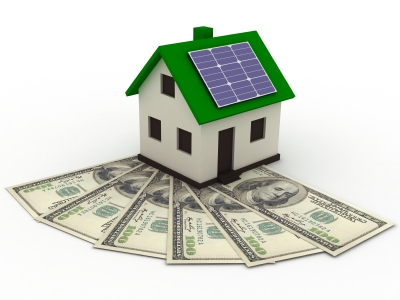Calculating the Return on Your Solar Investment
Investing in a solar photovoltaic (PV) system can seem out of reach for many homeowners – it’s no wonder when most residential solar PV systems have a ten thousand dollar (or higher) price tag.

But once you get over the sticker shock, the reality is that these upfront costs are only part of the equation. To truly know if solar PV is a good investment for you, you have to examine the return on investment (ROI). In other words, how quickly will your solar PV system pay for itself and actually start earning you money?
To calculate your ROI, you need to gather a few different data points:
- How much electricity your home consumes
- How much you pay for electricity
- How much capacity your solar PV system has
- How much it costs to produce electricity from your PV system
Calculating Your Home’s Electricity Consumption
As a general rule of thumb, the average U.S. home consumes about 1 kilowatt of electricity per hour. Multiplied by 730 hours per month, this means that that Americans typically consume 730 kWh each month. But this is just the average – there are many things that will impact your electricity consumption. For instance, if your home is larger or smaller than average, you will likely use more or less electricity to heat and cool your home. Luxury devices, like hot tubs or multiple televisions, can increase your consumption. And don’t forget to factor in other things like how many occupants live in your home and what climate you live in to estimate if you might diverge from the average. The best way to get a handle on how much electricity you truly consume is to look at your utility bills over the last year.
Knowing How Much You Pay for Electricity
Next, you need to know the rate at which you’re being charged by your utility company. Typically, the average price of electricity is around $.10/kWh. So if you use 730 kWh/month at a rate of $.10/kWh you pay about $73 in electricity costs each month. Check your latest utility bill statement to see what your actual rate – it can be much higher or lower depending on your location.
Determining Your Solar PV System’s Capacity
The key to improving your ROI is to not oversize your PV system. Generally speaking, it’s safe to assume you will need a solar PV system that has a generating capacity of 10 watts per square foot. In other words, for every kW you use, you will need a solar PV system that is about 100 square feet in size. You may adjust to a bigger or small array depending on how many hours of sunlight you receive in your area as well as other variable needs.
Estimating the Cost of Producing Solar Power
The last piece of the puzzle is to determine how much your solar PV system will cost. While this varies considerably, on average it costs about $8/watt so a 3 kW system could cost around $24,000. Many utilities and local governments offer rebate incentives that can bring the costs of your solar PV system down by 50% so be sure to factor these into the final equation.
Armed with these data points, you can now calculate your ROI or how soon you will start to see a dollar return on your investment. For instance, if your system cost $12,000 and your yearly benefit was $3,000 your solar PV system has a 4-year payback. Don’t want to do the math on your own – check out these plug and play calculators to estimate your ROI:
Solar
Simplified
Solar
Panel ROI
Calculating
Payback for a Solar
Recent Posts
-
Avoiding Hidden Dangers – Maintain Your Solar Panels Properly
Although solar energy is a sustainable power source, it doesn't mean your equipment will last f …13th Apr 2017 -
Beer, Courtesy Of The Sun...
Today is National Beer Day ( #NationalBeerDay ) and for many breweries across the world light …7th Apr 2017 -
Can Going Solar Help Your Business Succeed?
Businesses have faced many challenges in the years since the Great Recession, a stormy time of econo …8th Mar 2017
